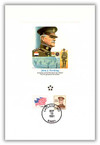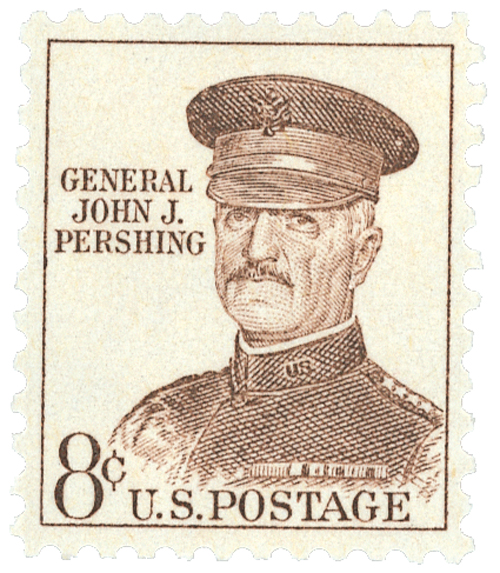
# 47013A FDC - 1991 AGMH John Pershing Proofcard Only
Often called the ultimate philatelic issue, the Fleetwood Proofcard is a distinctive commemorative with an elegantly embossed surface. Each Proofcard bears an original work of art complementing the theme of the stamp and created exclusively for Fleetwood by a leading American artist. Proofcards are often collected on their own, but would also make a beautiful addition to your existing stamp or cover collection.
Birth Of John J. Pershing
One of six children, Pershing grew up during the Civil War, during which his father was a civilian merchant for the 18th Missouri Volunteer Infantry. After completing high school in 1878, Pershing taught local African American children for a time before attending the State Normal School. He graduated in 1880 with a degree in scientific didactics.
Pershing entered West Point in 1882. He later admitted that he mostly wanted to attend because he would receive a better education than most other places available to him. Yet Pershing was soon recognized for his leadership abilities, ultimately reaching the rank of First Captain, the highest cadet rank. After graduating in 1886, Pershing was assigned to the 6th Cavalry, with which he served in New Mexico, California, Arizona, and North Dakota. He became an expert marksman and in 1891 was rated second in pistol out of all US Army soldiers.
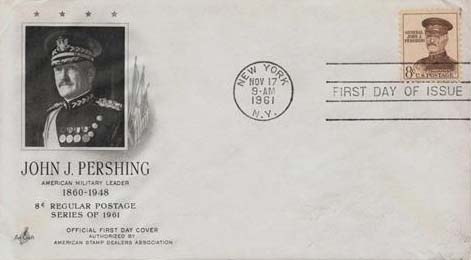
Pershing became a professor of military science and tactics at the University of Nebraska on September 15, 1891. At that time, most Americans believed there would never be another major war. Pershing overcame adversity from the faculty and president of the university to create a well-disciplined drill company, which he entered in the 1892 National Competitive Drills, held in Omaha, Nebraska. Pershing’s drill company excelled and brought greater attention to military discipline and training at the university. Pershing also earned his law degree from the University of Nebraska in 1893.

In 1892, Pershing took command of one of the original Buffalo Soldier regiments. It was from this service that earned the nickname “Black Jack.” In 1897, Pershing was made an instructor at West Point. He went on to serve in the Spanish-American War, fighting at San Juan Hill and earning a Silver Citation Star. During the Philippine-American War, he helped suppress the Filipino Insurrection and was cited for bravery for his actions on the Cagayan River.
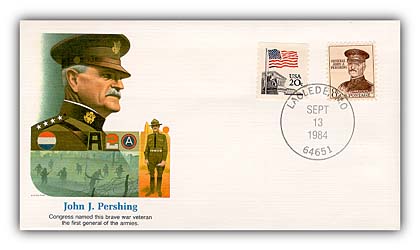
In 1905, Pershing was made military attaché in Tokyo. Upon his return, he was promoted to brigadier general, skipping three ranks. Over the next few years, he served in the Balkans and the Philippines. And in 1916, he led 10,000 men on the Punitive Expedition. His forces stopped Mexican marauder Pancho Villa’s attacks on the American border along the Rio Grande.
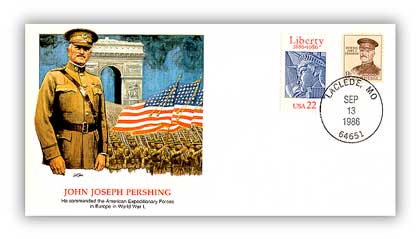
Pershing’s superior officer was selected to lead the American Expeditionary Force to France during World War I but suffered a heart attack before taking command. Pershing was promoted to general and placed in charge of organizing, training, and supplying nearly two million soldiers.
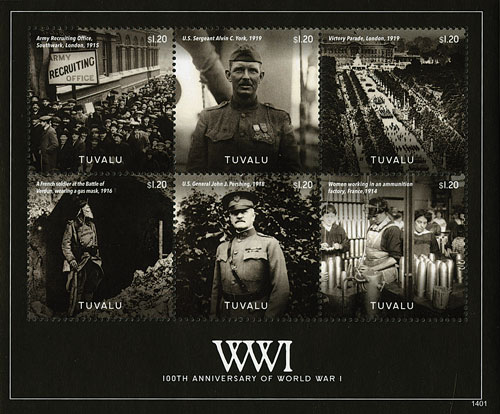
Pershing pushed for the US soldiers to be formed into their own army there, rather than dispersed among British and French commands. After a series of defeats, he changed strategy and put some of his divisions under foreign command. With the full support of the president and secretary of war, Pershing helped turn the tide, scoring an Allied victory. America’s success in the war was largely attributed to Pershing’s leadership and he was welcomed home a hero. Pershing also established the first Military Police Corps, oversaw the “Pershing Boot,” and was the first American promoted to general of the armies of the United States. (The only other to hold this rank was George Washington, who was posthumously promoted in 1976.)
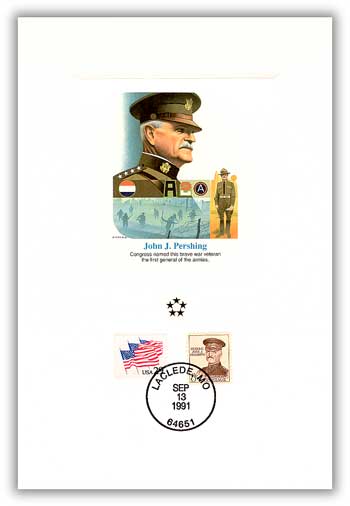
Pershing went on to serve as Chief of Staff of the US Army for three years and created the Pershing Map, a national highway system similar to the eventual Interstate Highway System. He stayed busy over the next several years, founding the Reserve Officers Association and serving in a number of other groups. Pershing was asked to run for president twice but refused. The Pershing tank and missile were later named in his honor. He died on July 15, 1948.
Often called the ultimate philatelic issue, the Fleetwood Proofcard is a distinctive commemorative with an elegantly embossed surface. Each Proofcard bears an original work of art complementing the theme of the stamp and created exclusively for Fleetwood by a leading American artist. Proofcards are often collected on their own, but would also make a beautiful addition to your existing stamp or cover collection.
Birth Of John J. Pershing
One of six children, Pershing grew up during the Civil War, during which his father was a civilian merchant for the 18th Missouri Volunteer Infantry. After completing high school in 1878, Pershing taught local African American children for a time before attending the State Normal School. He graduated in 1880 with a degree in scientific didactics.
Pershing entered West Point in 1882. He later admitted that he mostly wanted to attend because he would receive a better education than most other places available to him. Yet Pershing was soon recognized for his leadership abilities, ultimately reaching the rank of First Captain, the highest cadet rank. After graduating in 1886, Pershing was assigned to the 6th Cavalry, with which he served in New Mexico, California, Arizona, and North Dakota. He became an expert marksman and in 1891 was rated second in pistol out of all US Army soldiers.

Pershing became a professor of military science and tactics at the University of Nebraska on September 15, 1891. At that time, most Americans believed there would never be another major war. Pershing overcame adversity from the faculty and president of the university to create a well-disciplined drill company, which he entered in the 1892 National Competitive Drills, held in Omaha, Nebraska. Pershing’s drill company excelled and brought greater attention to military discipline and training at the university. Pershing also earned his law degree from the University of Nebraska in 1893.

In 1892, Pershing took command of one of the original Buffalo Soldier regiments. It was from this service that earned the nickname “Black Jack.” In 1897, Pershing was made an instructor at West Point. He went on to serve in the Spanish-American War, fighting at San Juan Hill and earning a Silver Citation Star. During the Philippine-American War, he helped suppress the Filipino Insurrection and was cited for bravery for his actions on the Cagayan River.

In 1905, Pershing was made military attaché in Tokyo. Upon his return, he was promoted to brigadier general, skipping three ranks. Over the next few years, he served in the Balkans and the Philippines. And in 1916, he led 10,000 men on the Punitive Expedition. His forces stopped Mexican marauder Pancho Villa’s attacks on the American border along the Rio Grande.

Pershing’s superior officer was selected to lead the American Expeditionary Force to France during World War I but suffered a heart attack before taking command. Pershing was promoted to general and placed in charge of organizing, training, and supplying nearly two million soldiers.

Pershing pushed for the US soldiers to be formed into their own army there, rather than dispersed among British and French commands. After a series of defeats, he changed strategy and put some of his divisions under foreign command. With the full support of the president and secretary of war, Pershing helped turn the tide, scoring an Allied victory. America’s success in the war was largely attributed to Pershing’s leadership and he was welcomed home a hero. Pershing also established the first Military Police Corps, oversaw the “Pershing Boot,” and was the first American promoted to general of the armies of the United States. (The only other to hold this rank was George Washington, who was posthumously promoted in 1976.)

Pershing went on to serve as Chief of Staff of the US Army for three years and created the Pershing Map, a national highway system similar to the eventual Interstate Highway System. He stayed busy over the next several years, founding the Reserve Officers Association and serving in a number of other groups. Pershing was asked to run for president twice but refused. The Pershing tank and missile were later named in his honor. He died on July 15, 1948.





